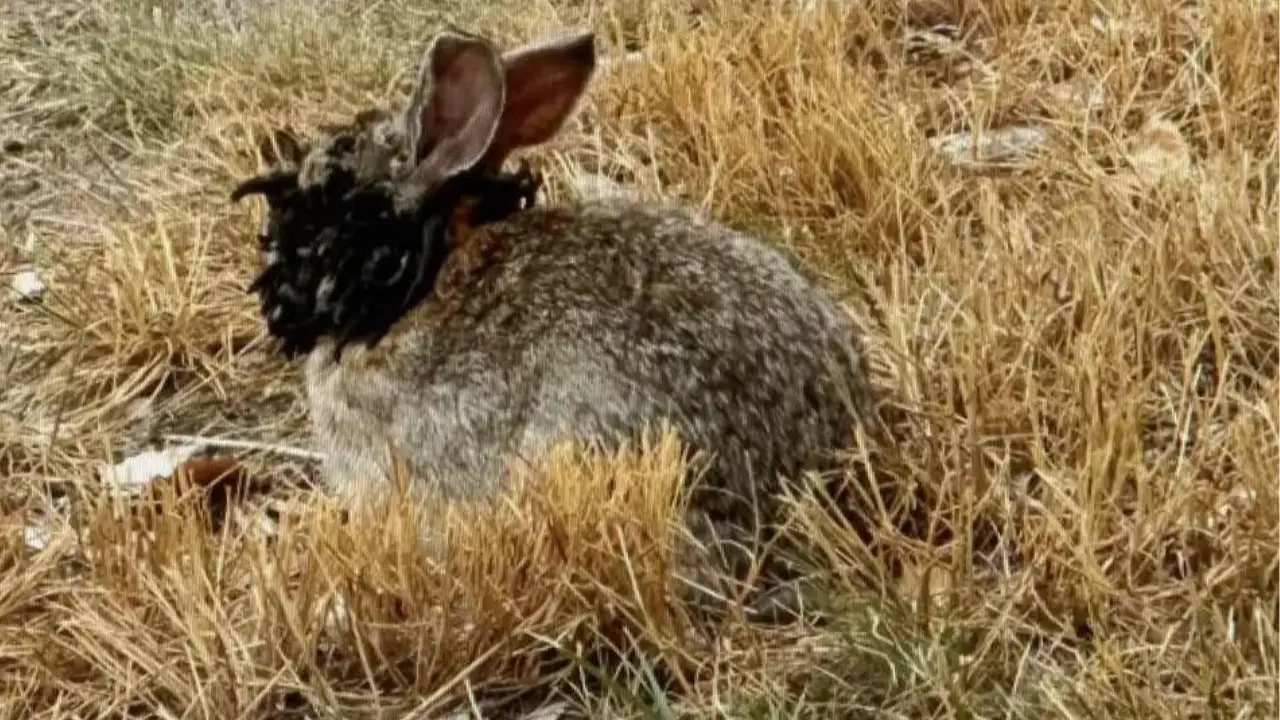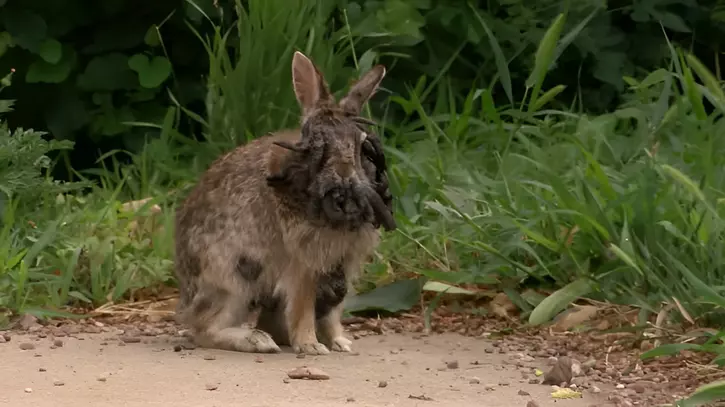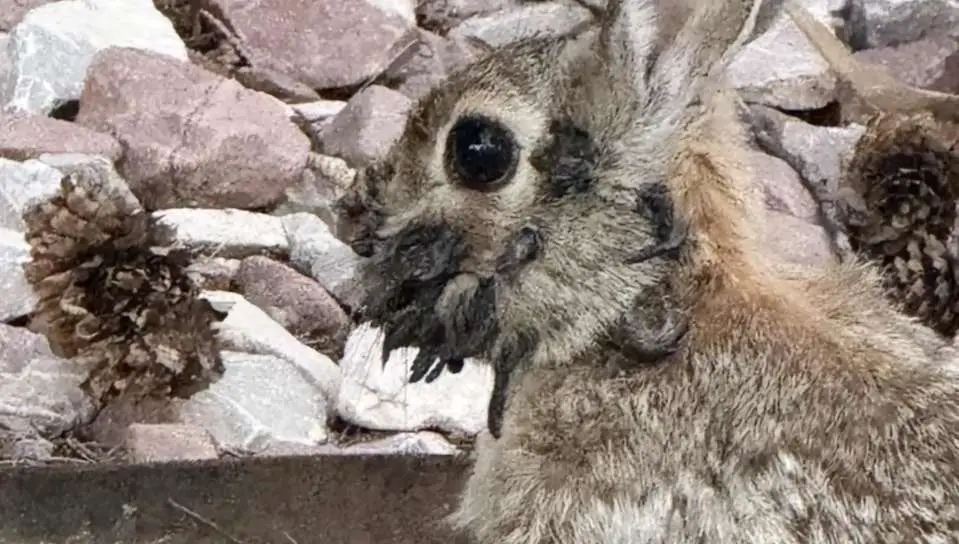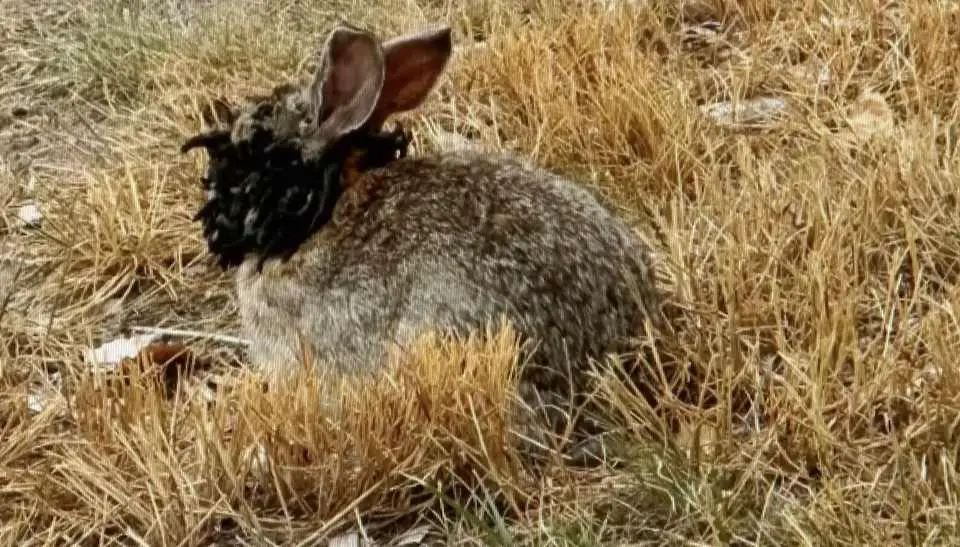
Credit: 9News
Experts Issue Warning As Infected ‘Frankenstein’ Rabbits With ‘Tentacles’ Have Invaded The U.S.
People have been horrified after discovering rabbits with tentacles, as experts issue a stark warning.
Residents of Fort Collins, Colorado, have been encountering something straight out of a horror movie in their neighborhoods: wild rabbits sporting disturbing black, tentacle-like protrusions from their heads and faces.
These unsettling sightings have sparked both concern and fascination among locals, with many initially fearing the animals might be suffering from plague or some unknown disease.
The unusual rabbits began appearing in southeast Fort Collins neighborhoods, immediately catching the attention of residents.
Susan Mansfield, one local witness, described her encounter with one of these afflicted animals, per Gizmodo: “It looks like it was black quills or black toothpicks sticking out all around his or her mouth.”

What made the situation even more remarkable was the rabbit’s persistence – Mansfield observed the same animal returning to her yard for two consecutive years, with the growths becoming more pronounced over time, Mansfield told NBC local affiliate KUSA.
Other residents have described the appearance as ‘scabby-looking growths’ covering the rabbits’ faces to WFSB, creating an almost alien-like appearance that has captured widespread attention on social media platforms.
Photos of the infected rabbits have gone viral across social media platforms, with users expressing a mixture of fascination and horror.
Some have dubbed them ‘zombie rabbits’ or ‘alien rabbits,’ while others have shared concerns about the animals’ welfare.
Colorado Parks and Wildlife (CPW) quickly identified the cause of these dramatic growths: Shope papillomavirus, also known as cottontail rabbit papillomavirus (CRPV).
This DNA virus is a close relative of the human papillomavirus and specifically targets rabbits, primarily cottontails, per Science Direct.
The virus causes wart-like tumors made of keratin to develop on the rabbits’ heads, ears, and around their mouths.
These growths can appear as black, spiny protrusions that resemble horns, tentacles, or quills, hence the dramatic descriptions from observers.
Unlike direct rabbit-to-rabbit transmission, Shope papillomavirus spreads primarily through biting insects, particularly mosquitoes and ticks.

These arthropod vectors carry the virus between rabbits, making the condition more prevalent during summer and fall months when insect activity peaks.
The infection process begins with small, red, raised spots on the skin that gradually develop into warty masses. Over time, these can transform into the dramatic black tendrils that have alarmed Colorado residents.
Wildlife officials have been quick to reassure the public that while the appearance is certainly startling, the virus poses no threat to humans, dogs, or other wildlife species.
Papillomaviruses are highly host-specific, meaning the rabbit strain cannot infect other animals.
However, CPW strongly advises residents to maintain their distance from infected rabbits and avoid any attempts to help, feed, or handle these animals, regardless of how harmless they might seem, MSN reports.
While the growths may look alarming, they typically don’t cause significant harm to the rabbits themselves.
However, complications can arise when the tumors develop over sensitive areas such as the eyes or mouth, potentially interfering with the animal’s ability to see, eat, or hear properly.
In some cases, the benign tumors can transform into malignant cancers, though this is relatively uncommon.

Most rabbits can live with the condition, and some growths may even resolve naturally over time.
Pet rabbit owners, however, can take preventive measures by protecting their animals from mosquito and tick bites through pest control and limiting outdoor exposure during peak insect activity periods.
If domestic rabbits do contract the virus, veterinarians can surgically remove the growths before they become problematic or malignant, per PetMD.
Interestingly, The Scientist claims that historical sightings of rabbits with Shope papillomavirus may have contributed to the North American folklore surrounding jackalopes, mythical creatures described as rabbits with deer antlers.
The horn-like appearance of the viral growths could easily have inspired such legends in earlier times.
The discovery of Shope papillomavirus in the 1930s played a crucial role in confirming that certain viruses can trigger cancer development.
Today, researchers continue to use this rabbit virus as a model to better understand HPV-related cancers in humans, making it an important tool in cancer research.
Related Article: Households Urged To Shut Windows ‘Day And Night’ For The Next Four Weeks
Related Article: Fatal Warning Issued As ‘Mega-Rat’ Discovered In Home
Want more stuff like this?
Get the best viral stories straight into your inbox!


